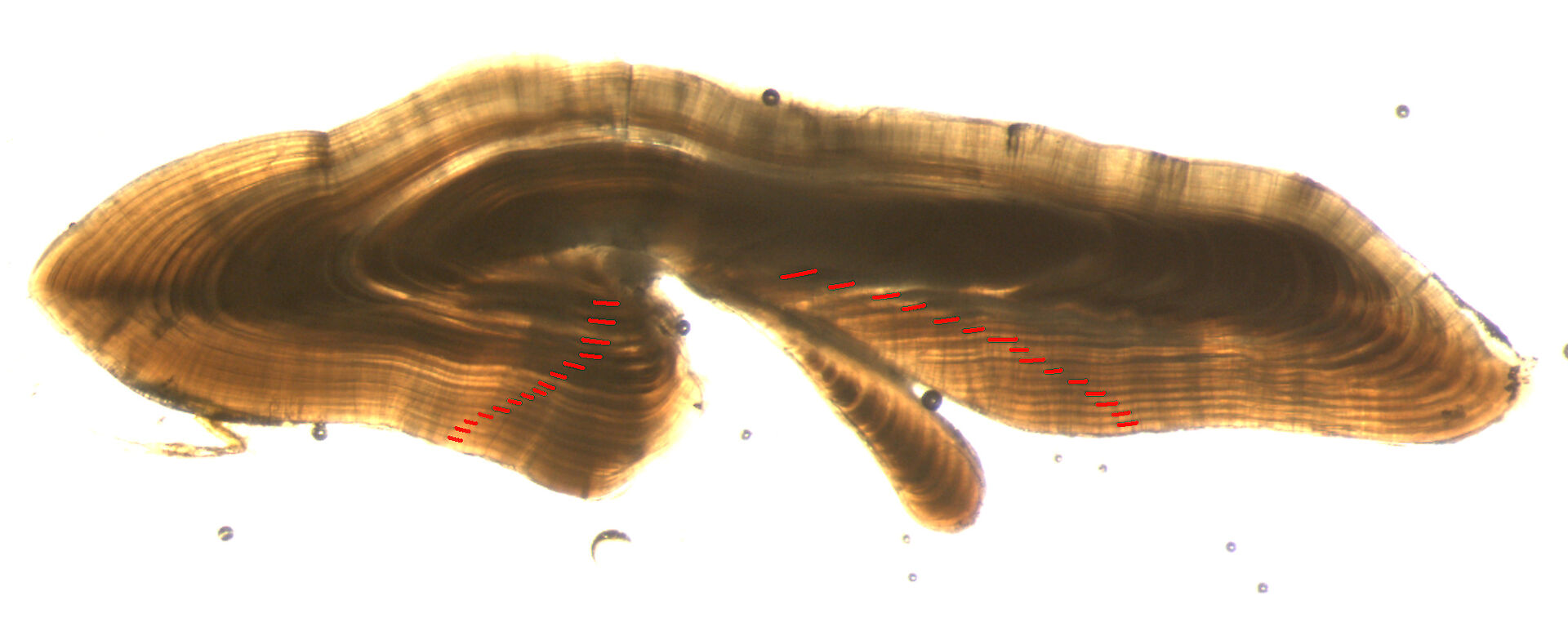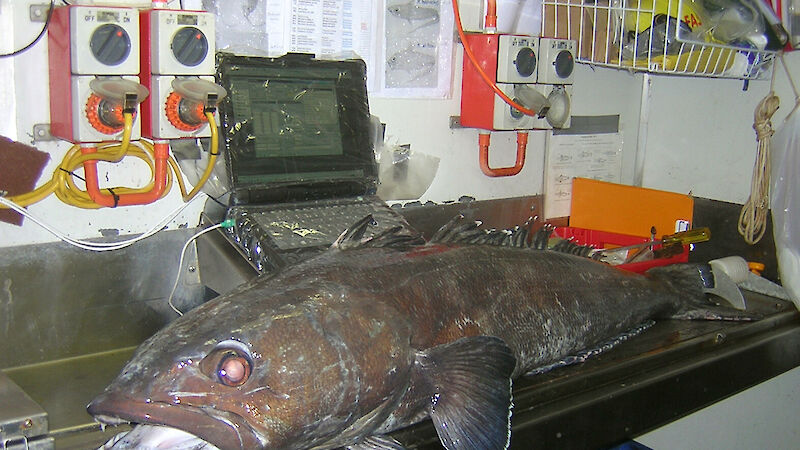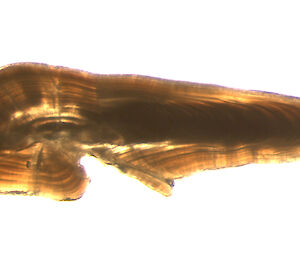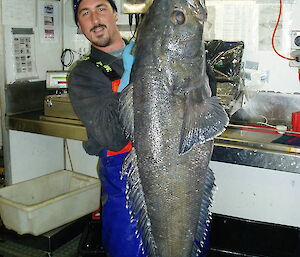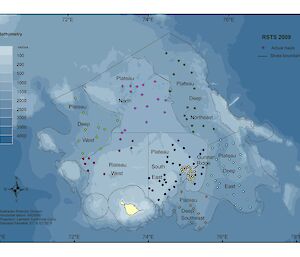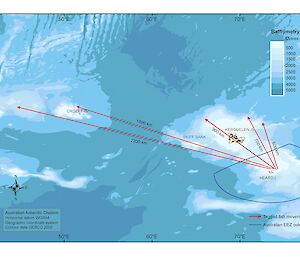Aesthetically speaking the Patagonian toothfish (Dissostichus eleginoides) has little going for it. But in some countries this deep sea monster, which can exceed 200kg in weight and live for some 50 years, is highly prized for its flavoursome flesh. A lucrative black market trade in the fish — known variously as ‘Chilean sea bass', ‘merluza negra’ and ‘mero’ — has led to illegal overfishing in the high seas and several high profile arrests and fines, including in Australian waters around Heard Island and McDonald Islands (HIMI).
The spectre of illegal fishing threatens the sustainability of the toothfish fishery. Increased patrols for illegal vessels and the work of the Commission for the Conservation of Antarctic Marine Living Resources (CCAMLR) are helping reduce the problem in the Southern Ocean. However, basic biological research is also important in helping conserve the toothfish population and manage the legal fishery.
Since 1997, collaborative work between the Australian fishing industry and scientists has been helping CCAMLR set sustainable quotas for toothfish catches (currently about 2500 tonnes for the HIMI fishery). Sustainable catch quotas rely in part on understanding the toothfish life cycle and behaviour, including when the fish reach sexual maturity, how fast they grow, how long they live, and whether different populations of toothfish interact. Australian scientists are investigating these questions in four main ways:
- data collection during an annual trawl survey;
- data collection by scientific observers on commercial fishing vessels;
- analysis of toothfish ear bones (otoliths); and
- scientific tagging.
This work is being conducted in the HIMI fishery in CCAMLR sector 58.5.2
The annual trawl survey around HIMI was designed by Australian Antarctic Division scientists to study the biology and stock structure of toothfish. Using commercial vessels, the trawls sample 160 points around the survey region (about 84 000km2) over 20 days to depths of 1000 m. Observers from the Australian Fisheries Management Authority (AFMA) record the location, number and total weight of fish caught, their size and weight, sex, and evidence of spawning.
'We've developed software and equipment called “Fishlog”, which includes a measuring board that records a fish’s length directly into the database and an electronic scale that automatically records the weight when the fish is placed on it,' Australian Antarctic Division fisheries biologist, Dr Dirk Welsford, says.
'This makes it easy for the observers to record information quickly and accurately, and in a format suitable for research and analysis by CCAMLR, AFMA and the Australian Antarctic Division.'
As the survey trawls are conducted in relatively shallow water, they tend to capture pre-adult fish (small juveniles and adolescents). The larger, older fish are more often found in deeper water, up to 2500m.
'A focus on the smaller fish allows us to see what stock will be coming into the fishery in future years and how the numbers vary each year,' Dr Welsford says.
'This allows us to accommodate peaks and troughs in the population and set catch quotas that should remain reasonably stable over the long term.'
The surveys have found that fish less than 250mm in size are rare, which suggests that they may be residing outside Australia’s Exclusive Economic Zone (EEZ), where the surveys occur, and inside the neighbouring French EEZ.
'We're working with French scientists now to set up a similar survey in the French EEZ,' Dr Welsford says.
The surveys have also found that the occurrence of small juveniles is patchy. For stock assessment purposes, this means that fish abundance across the whole region cannot be extrapolated from a small area. Rather, fish numbers need to be measured at different sites around HIMI, and at different depths, to provide an absolute population measure.
Data collected during the annual trawl survey overlaps that collected by scientific observers on commercial vessels throughout the year. As well as collecting biological data the AFMA observers collect toothfish otoliths and conduct the scientific tagging program.
More than 22 000 otoliths have been collected in the past 12 years and about 6000 of these have been analysed at the Australian Antarctic Division. Like tree rings, otoliths record every year of toothfish life as a thin band. Analysis has shown that most toothfish caught at HIMI are 3–14 years old, although fish as old as 28 years have been captured. Most of the older, large fish are female.
The scientific tagging program involves tagging about 1000 fish a year with two types of tags; a simple external plastic tag and a microchip inserted into its flesh — much like that used to identify cats and dogs. Both tags provide the fish with a unique identifying number, which can be matched against records made when it was originally released.
'If the fish are recaptured after they're tagged, they provide us with information about how much they have grown — so we can determine growth rates — and how far they can swim,' Dr Welsford says.
About 20% of tagged fish are recaptured. The work has shown that most fish are sedentary, moving no more than 30km from where they were released. However, they occasionally move great distances — over 2000km. The reason for this is not clear, but appears to correspond to a movement towards a known spawning ground at Skiff Bank, in the French EEZ.
Dr Welsford hopes that future collaborative research with French scientists and a continuation of the multi-faceted approach to toothfish research, taken by Australian Antarctic Division scientists, will unlock more secrets of these enigmatic fish.
WENDY PYPER
Corporate Communications, AAD
Australian toothfish fishery facts
In the Australian Fishing Zone around Heard Island and McDonald Islands, up to three commercial vessels fish for Patagonian toothfish and mackerel icefish using trawls and longlines. The fishery is managed by the Australian Fisheries Management Authority using principles set by the Commission for the Conservation of Antarctic Marine Living Resources. The Australian Antarctic Division coordinates Australian fisheries research and assessments in the region (Australian Antarctic Magazine 13: 9, 2007).
The total allowable catch set for the toothfish fishery has varied from 297 t in its first year (1994–95) to a maximum of 3800 t in 1996–97, and down to 2500 t in 2008–09. Illegal, unregulated and unreported fishing was a significant problem in the late 1990s, with catches of some 7000 t estimated in 1996–97 and 3500 t in 2001–02. However, illegal catches declined from 2003–04 and there have been no reports of illegal fishing since 2006–07.
Bycatch mitigation measures and research are helping to reduce seabird and other bycatch in the fishery. Fish species caught as bycatch include unicorn icefish, grenadiers, grey rockcod and skates and rays. Sixteen seabirds have been killed in the trawl fishery since 2000–01 but no seabird deaths have been reported in the longline fishery.

